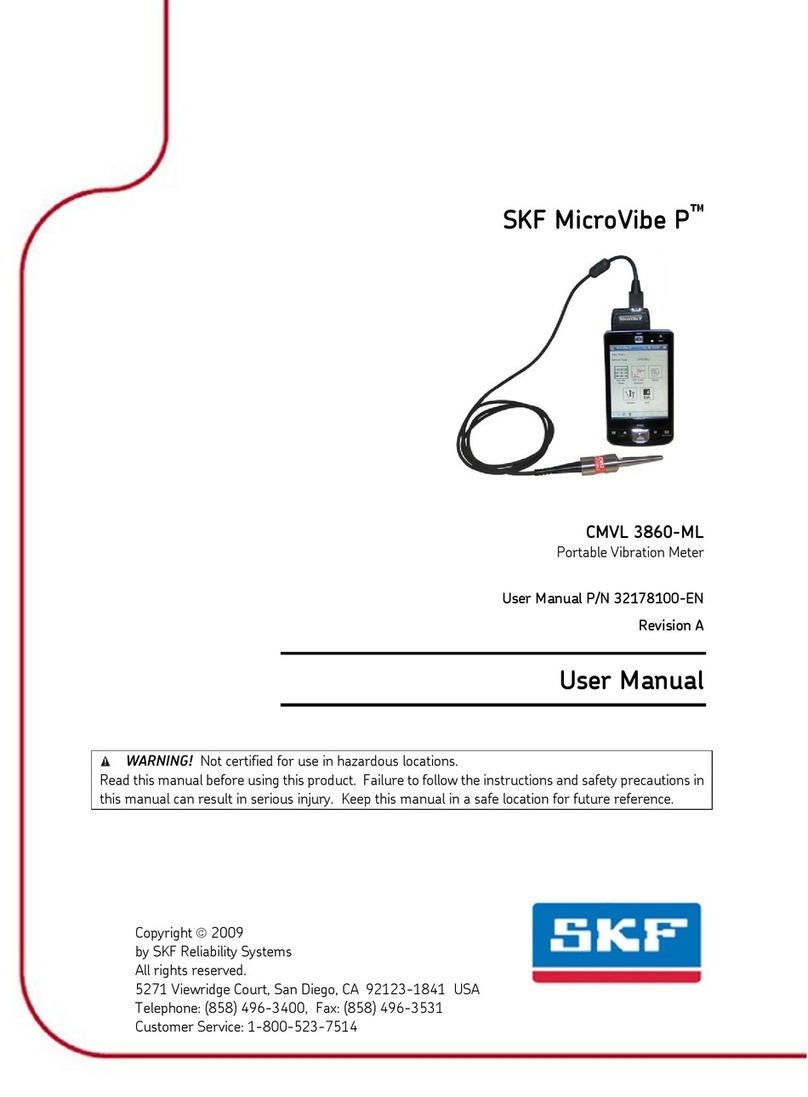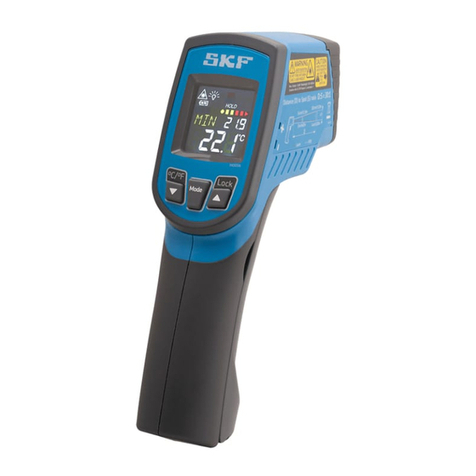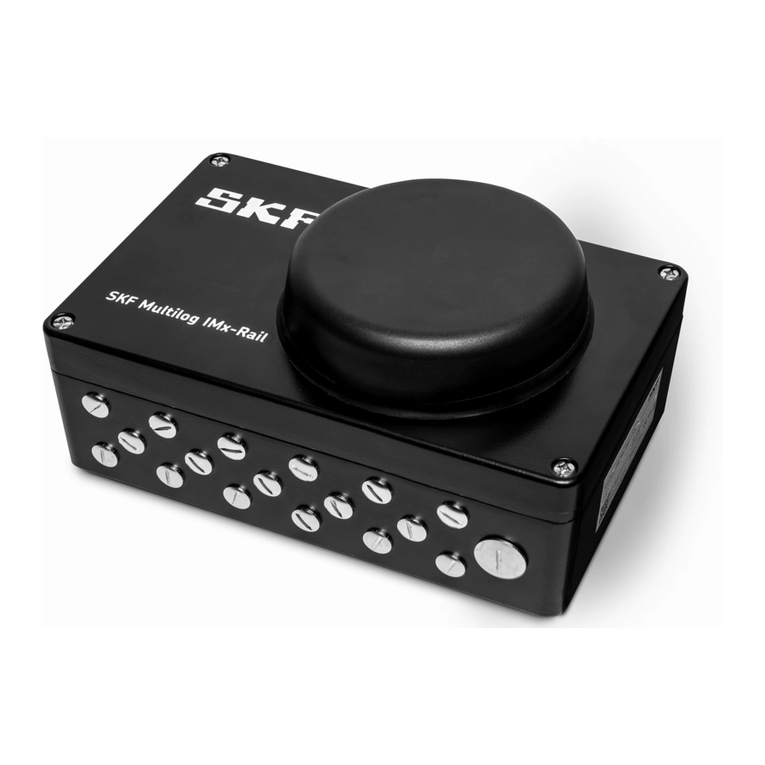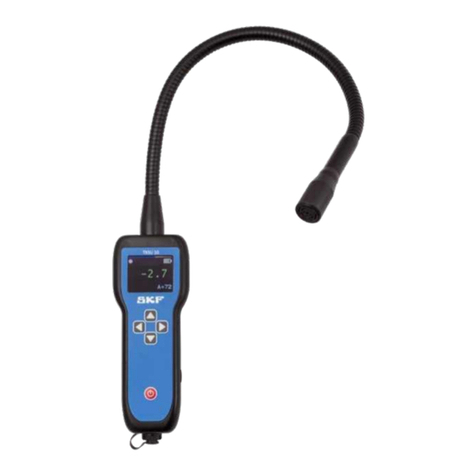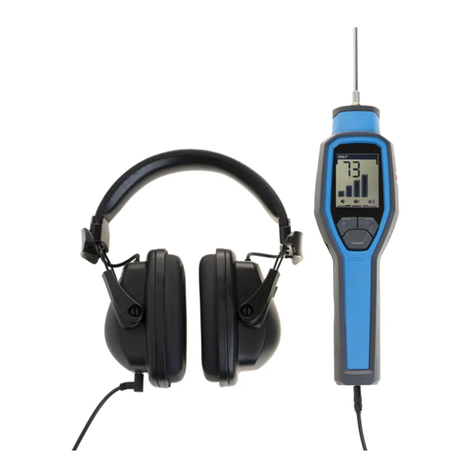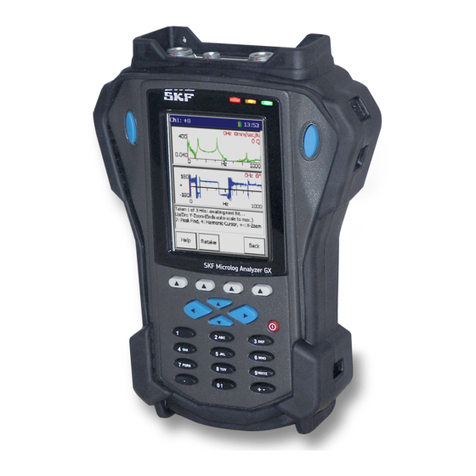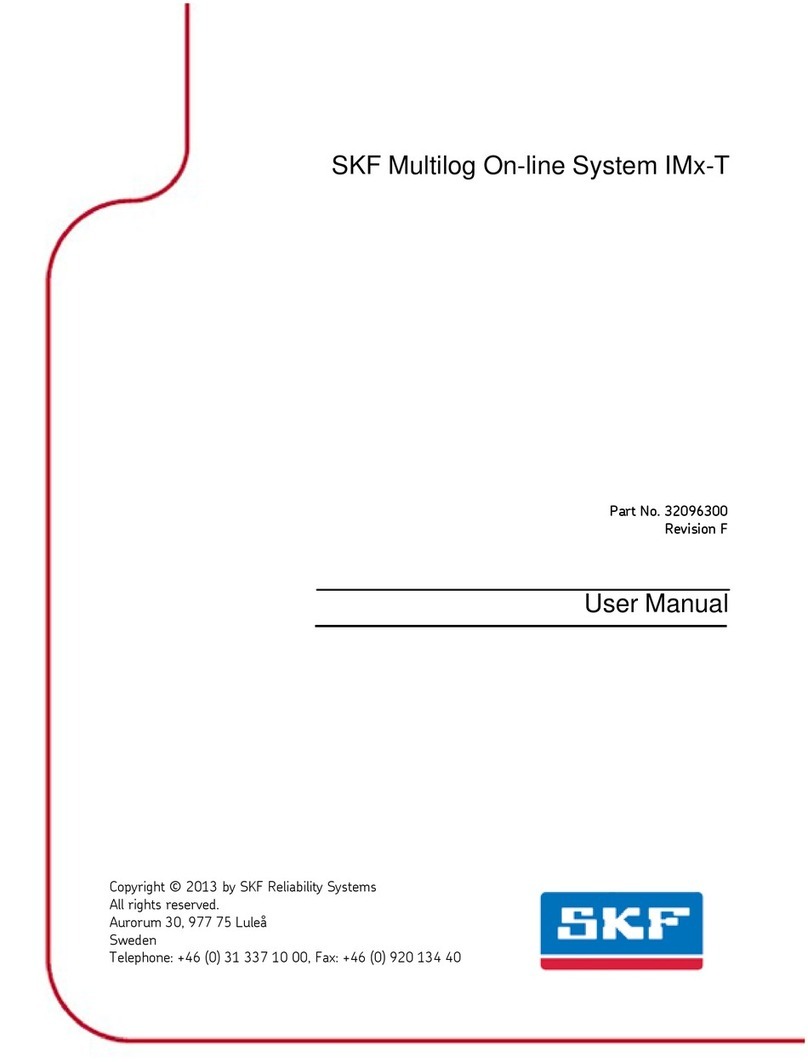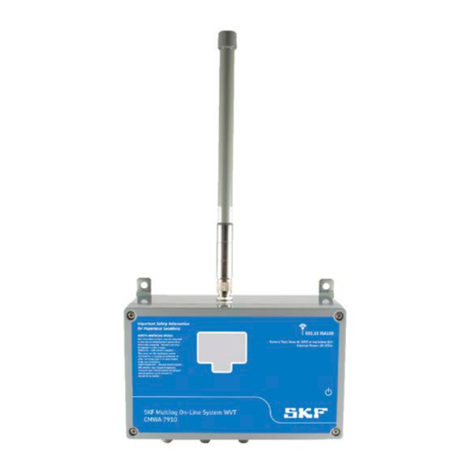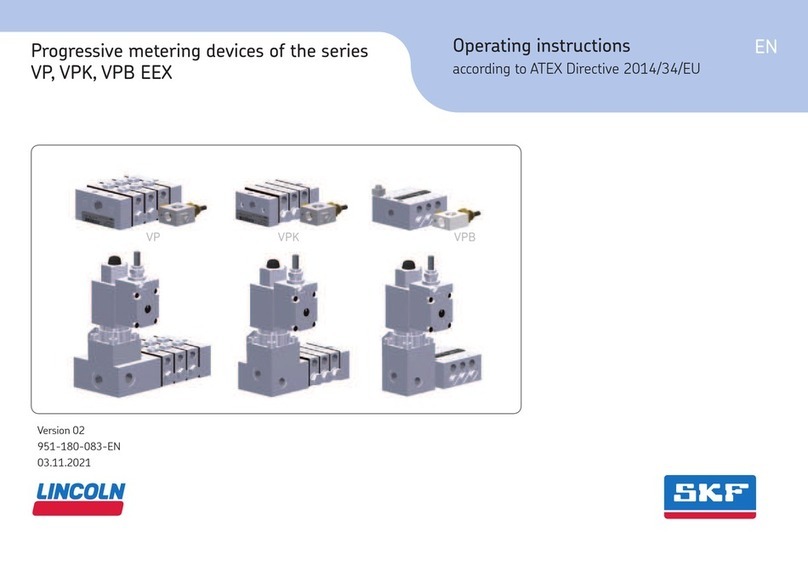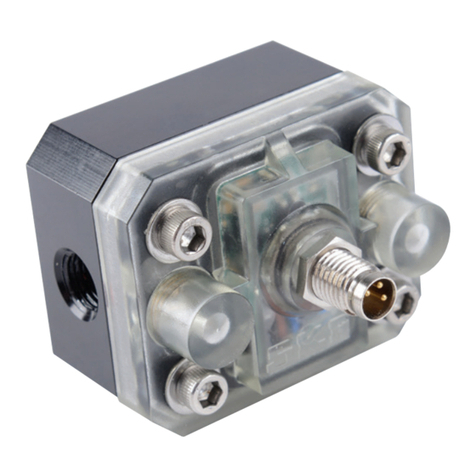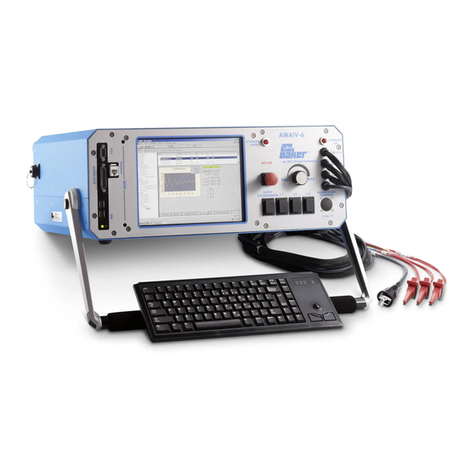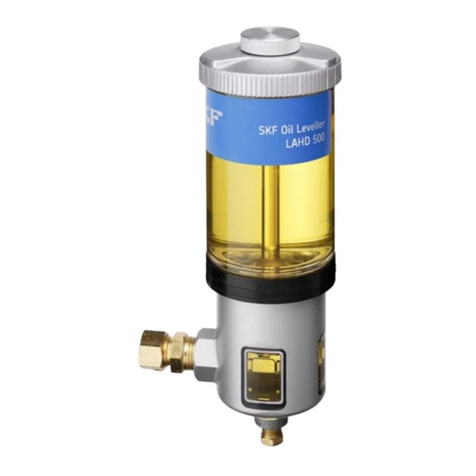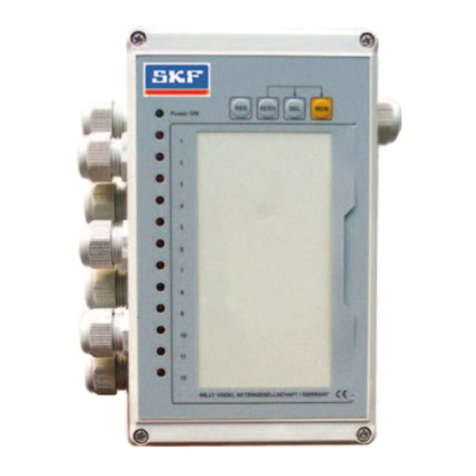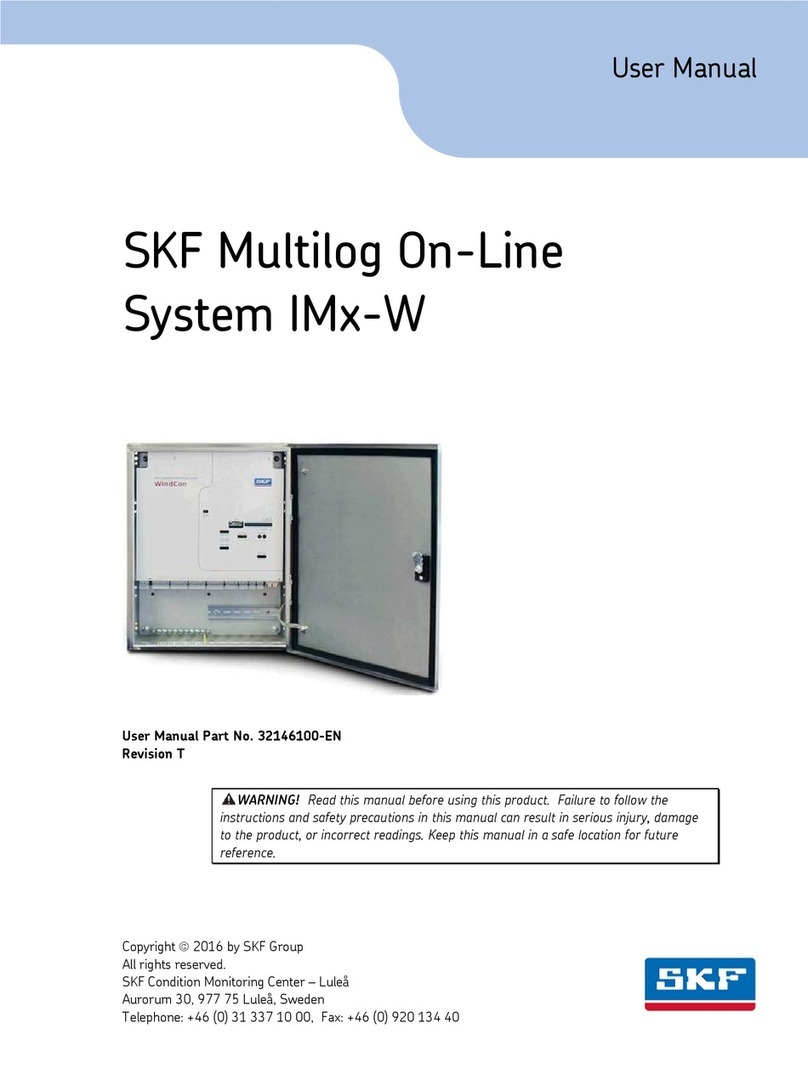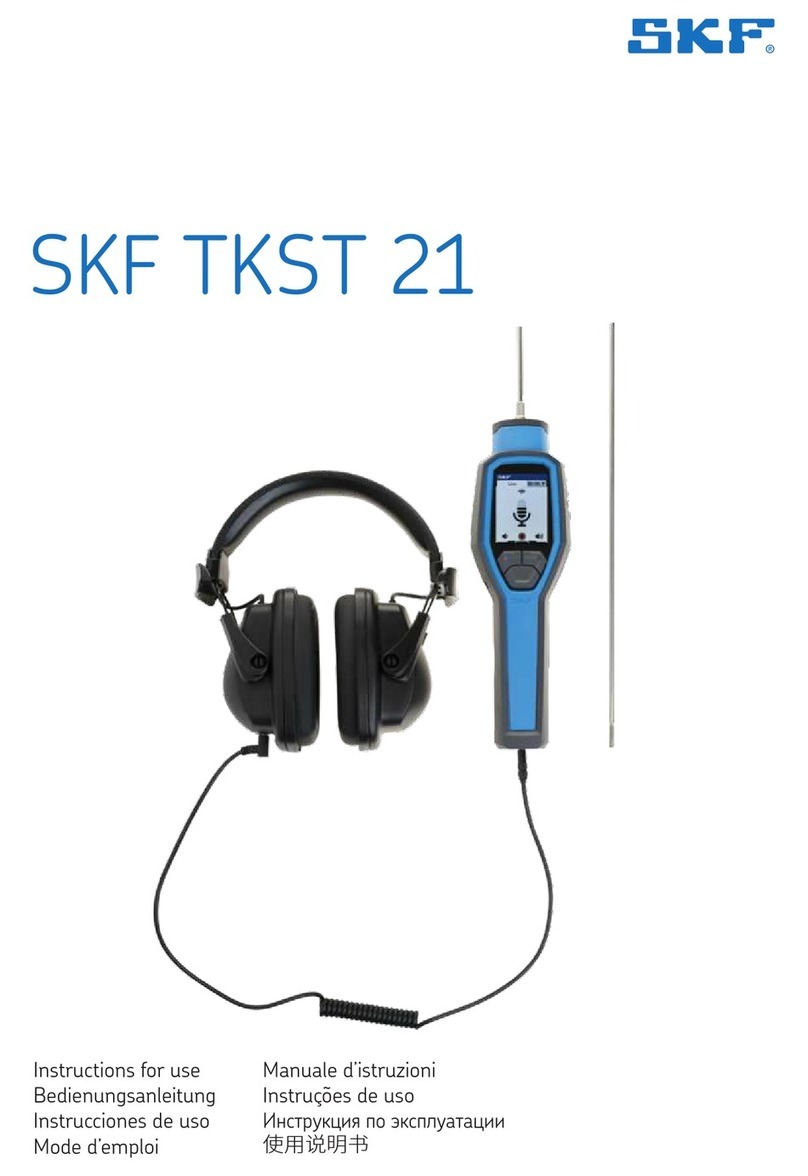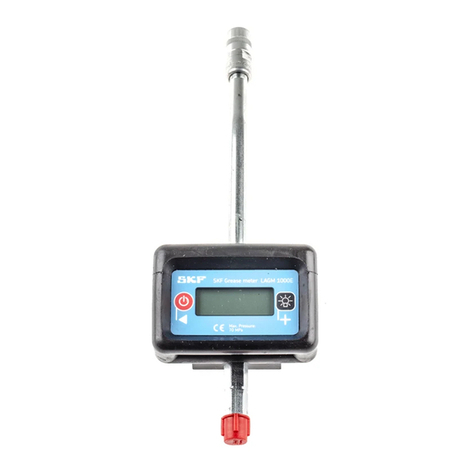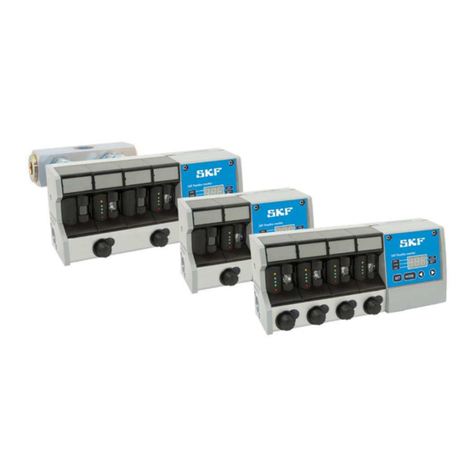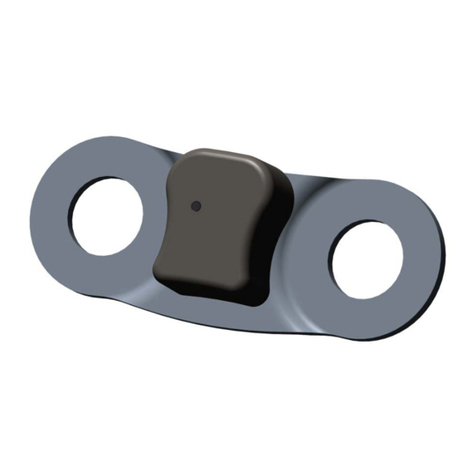
8SKF TMEH 1
3.3 Measuring
For optimum results make sure you use a representative oil sample and
that its temperature is not higher than 40 °C (100 °F). Place enough oil
in the sensor to fully cover the sensor surface. Press the test button and
keep it depressed for 10 seconds or until the segments have stopped
moving around the display (the display will flash to show the unit is
testing). The result will remain on the display when the button is released
until the next test is carried out.
To test again, clean out the sensor well with a clean rag or tissue. Refill
the sensor well and press the test button again. A new reading will appear
on the display.
In case an oil of another
brand is checked,
recalibration of the
instrument will be
needed.
(see 3.1)
3.4 Interpretation of the reading
Users should use the SKF TMEH 1 to monitor the change in the
oils properties and build up a picture of oil degradation based on
their experience and own operating criteria. Individual thresholds of
acceptability can be marked on the unit’s scale.
The red and green areas are designed as an indicator of the condition
of an engine oil. Within the green band the oil is deemed acceptable and
within the red area the oil should be changed and checked again after a
short running period to ensure no mechanical problems are present.
4. Contamination effects
The usual contamination found in oils is caused by oxidation and acid
build up, these occur during the normal running of an engine and
should show up as a gradual increase in readings over a period of time
or distance. Other contaminants occur because of excessive wear or
mechanical failure, the main elements of which are dirt, soot, fuel, water,
anti-freeze and metal particles. These elements give a marked increase
in the Oil check monitor’s reading and will give immediate warning of
possible resulting failure.
1. Water and anti-freeze contamination will cause a dramatic change
in the reading, which will move the segments well into the red.
2. Metal particles will also cause an extreme reading though the display
should move up in small jumps as the particles settle on the sensor
surface.
3. Fuel is harder to detect as its presence will sometimes mask the
presence of other contaminants. If the oil is only contaminated by
fuel the display will show it as a stronger reading well into the red but
the presence of water or metal will sometimes counteract the fuel
giving a reading in the green. Should an engine oil continue to show
